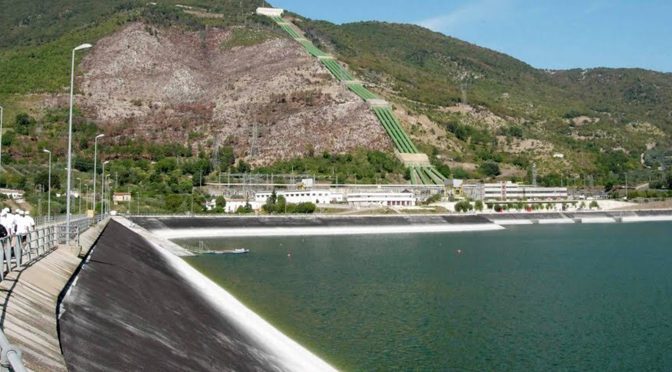The European Commission set a series of ambitious targets for 2030 for its member states, and Italy is also called upon to make a push towards the energy transition in line with the United Nations’ Sustainable Development Goals. None of this can happen without developing several key technologies – especially battery energy storage systems (or BESS), which are essential for storing excess energy, stabilizing the power grid, and solving problems of discontinuity and intermittence. Sources of renewable energy like the sun or the wind generate amounts of energy that vary over time, so they are often unpredictable and not always available.
For years, we’ve resorted to pumped storage systems to cope with these critical issues: they push the high-altitude water into a basin, thereby accumulating a hydroelectric energy potential that is both clean and ready to use. However, the scarcity of suitable locations for their development, and especially the availability of new and cost-effective technological solutions, are fueling interest in different kinds of systems, like lithium batteries.
In short, pumped storage and BESS are necessary solutions that are perfectly aligned with the goals of Fit for 55, the European Commission’s climate package to achieve the goals of the European Union’s Green Deal.
Increasing the penetration of renewables in the energy market
“Pumped storage and BESS are two different technologies that actually target the same three system requirements,” explains Giuseppe Cicerani, Head of Business Development Energy Storage at Enel Green Power. “First of all, adequacy: in other words, the system’s capacity to cope with energy peaks. Then there is security: its ability to ensure the exact balance between energy input and output at all times. And, finally, the possibility of decoupling the energy production phase from its consumption phase.”
This last aspect in particular is essential in order to increase the penetration of renewable sources in the power grid, so as to achieve a significant increase in the overall amount of clean energy produced. “Renewable energy sources are dependent on the availability of the natural resources that fuel them, and that only partially coincides with consumers’ habits. If we can’t store the energy generated and schedule production, then the power grid can’t function reliably and it will never be able to meet the entire demand,” continues Cicerani. Just think, for example, of an electricity system powered only by solar panels: it has to accumulate the energy produced during the central hours of the day and make it available when the sun is gone.
Enel Green Power is fully committed to making sure that the electricity grids where it operates can be powered 100% by renewable energy. First and foremost, by enhancing the pumped storage systems that already exist, trying to maximize the capacity and the efficient use of the existing infrastructures and hydroelectric resources. Building new plants is certainly another option for the future, but it entails much higher costs and long construction times. That’s why, in the short term, we intend to take full advantage of what we already have at our disposal, starting with the conversion of existing hydroelectric plants into pumped storage stations and enhancing them by adapting them to the grid’s changing needs.
Comparing pumped storage and BESS
These two solutions, pumped storage and BESS, are not interchangeable, however; rather, they are synergistic, and they have important elements that differentiate them. First of all, in terms of timelines. Pumped storage systems have been used for a long time and are a mature technology; BESS, instead, were developed only in the last decade and have become relevant in the sector only in the last three years: the cost of lithium batteries has decreased by over 90% since 2010, becoming not only a truly appealing technology, but also cutting edge and capable of stimulating radical change. On the other hand, pumped storage systems are also often used as massive batteries: not only can they store large amounts of energy, but they are also used as a way to balance the grid and provide ancillary services to the system, which are necessary to ensure the network’s security and to regulate its tension and frequency.
There are also advantages to both solutions. Today, the cost per megawatt of a pumped storage system varies significantly based on the site and on the kind of project, and it is sometimes much greater than the cost per megawatt of a battery. Moreover, pumped storage requires the presence of a suitable location, a vertical drop, and it has a considerable impact on the area; a battery, on the other hand, can be installed potentially anywhere, it occupies an extremely small amount of space, and it has virtually no visual impact. Just think that for 71 GWh of new storage[1] (instrumental in order to achieve the 2030 goals set by Fit for 55 for Italy), eight hours’ worth of BESS would only need 400 hectares: an area slightly larger than New York’s Central Park but divided among hundreds of power stations.
In short, rather than considering pumped storage and BESS as two solutions competing with one another, it would be more useful to take advantage of the benefits that each can provide. This way we can obtain the best combination in terms of system efficiency and sustainability.
[1]Source: Documento di Descrizione degli Scenari 2022, published by Terna and SNAM.


